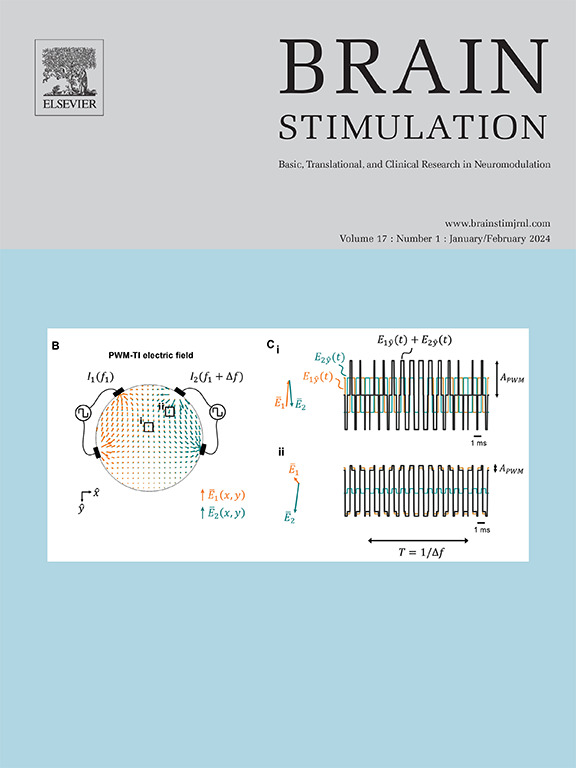短暂的经颅聚焦超声刺激引起海马突触回路的持久改变
IF 8.4
1区 医学
Q1 CLINICAL NEUROLOGY
引用次数: 0
摘要
背景简介经颅聚焦超声刺激(tFUS)被用于认知映射,假设干预本身不会对目标的潜在网络造成持久的改变。然而,所谓的“离线”效应如何影响神经回路的动态功能在很大程度上是未知的。目的探讨超声刺激对大鼠海马回路功能的持续性影响。方法采用40s、5hz脉冲超声或假刺激分别对离体大鼠海马和活体大鼠海马切片进行刺激。通过定量蛋白质组学和细胞外场电生理观察超声对海马动态突触和回路功能的影响。结果超声刺激引起海马蛋白表达和激酶活性的持续差异变化。这与基础突触传递的增强和海马回路对突触可塑性的易感性的改变同时发生。这些效应通过典型的akt依赖性化生过程发生。结论tFUS可从根本上调节神经回路中决定突触功能的关键信号机制。重要的是,这些影响的持续时间超过了刺激的持续时间。这些发现为tFUS对神经网络功能的持续影响提供了机制上的见解,并强调了在动物和人类研究中考虑这种影响的重要性。本文章由计算机程序翻译,如有差异,请以英文原文为准。
Brief transcranial focused ultrasound stimulation causes lasting modifications to the synaptic circuitry of the hippocampus
Background
Brief transcranial focused ultrasound stimulation (tFUS) is used in cognitive mapping, where it is assumed that the intervention itself does not cause lasting modifications to the underlying networks being targeted. However, how so-called ‘offline’ effects impact the dynamic function of neural circuits is largely unknown.
Objectives
To determine the persistent effects of ultrasound stimulation on hippocampal circuit function.
Methods
Acute rat hippocampal slices in vitro, and rat hippocampi in vivo, were exposed to 40 s, 5 Hz pulsed ultrasound or sham stimulation. The effects of ultrasound on the dynamic synaptic and circuit function of the hippocampus were assessed through quantitative proteomics and extracellular field electrophysiology.
Results
We find that ultrasound stimulation induces persistent and differential changes in protein expression and kinase activity in the hippocampus. This occurs concurrently with an enhancement of basal synaptic transmission and modifications to the susceptibility for the hippocampal circuit to undergo synaptic plasticity. These effects occur via a canonical Akt-dependent metaplastic process.
Conclusion
The results indicate that tFUS can fundamentally modulate key signalling mechanisms that are responsible for determining the synaptic efficacy in a neural circuit. Importantly, these effects last beyond the duration of the stimulus. These findings provide a mechanistic insight into the sustained impact of tFUS on network function, and emphasise the importance of considering such effects in animal and human studies.
求助全文
通过发布文献求助,成功后即可免费获取论文全文。
去求助
来源期刊

Brain Stimulation
医学-临床神经学
CiteScore
13.10
自引率
9.10%
发文量
256
审稿时长
72 days
期刊介绍:
Brain Stimulation publishes on the entire field of brain stimulation, including noninvasive and invasive techniques and technologies that alter brain function through the use of electrical, magnetic, radiowave, or focally targeted pharmacologic stimulation.
Brain Stimulation aims to be the premier journal for publication of original research in the field of neuromodulation. The journal includes: a) Original articles; b) Short Communications; c) Invited and original reviews; d) Technology and methodological perspectives (reviews of new devices, description of new methods, etc.); and e) Letters to the Editor. Special issues of the journal will be considered based on scientific merit.
 求助内容:
求助内容: 应助结果提醒方式:
应助结果提醒方式:


